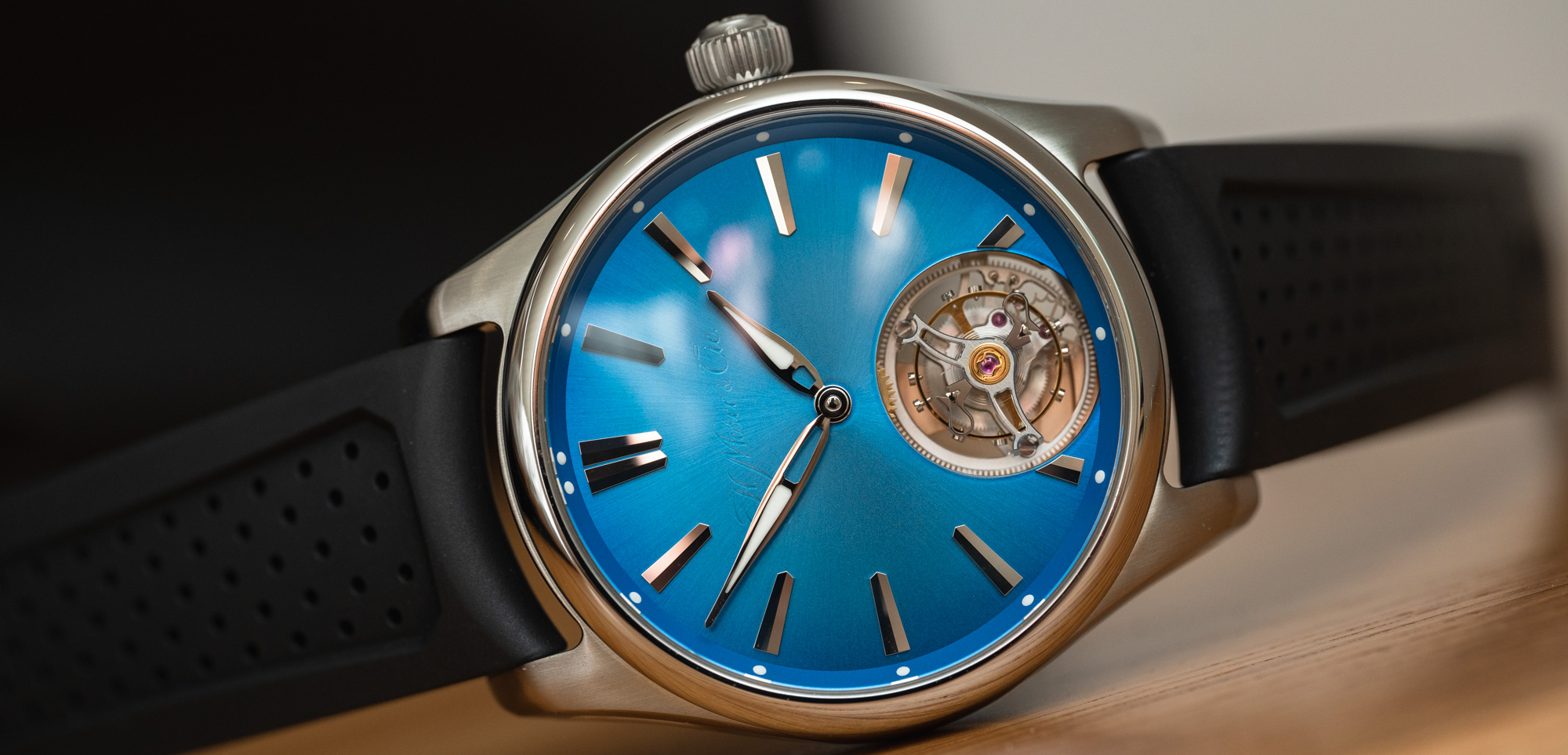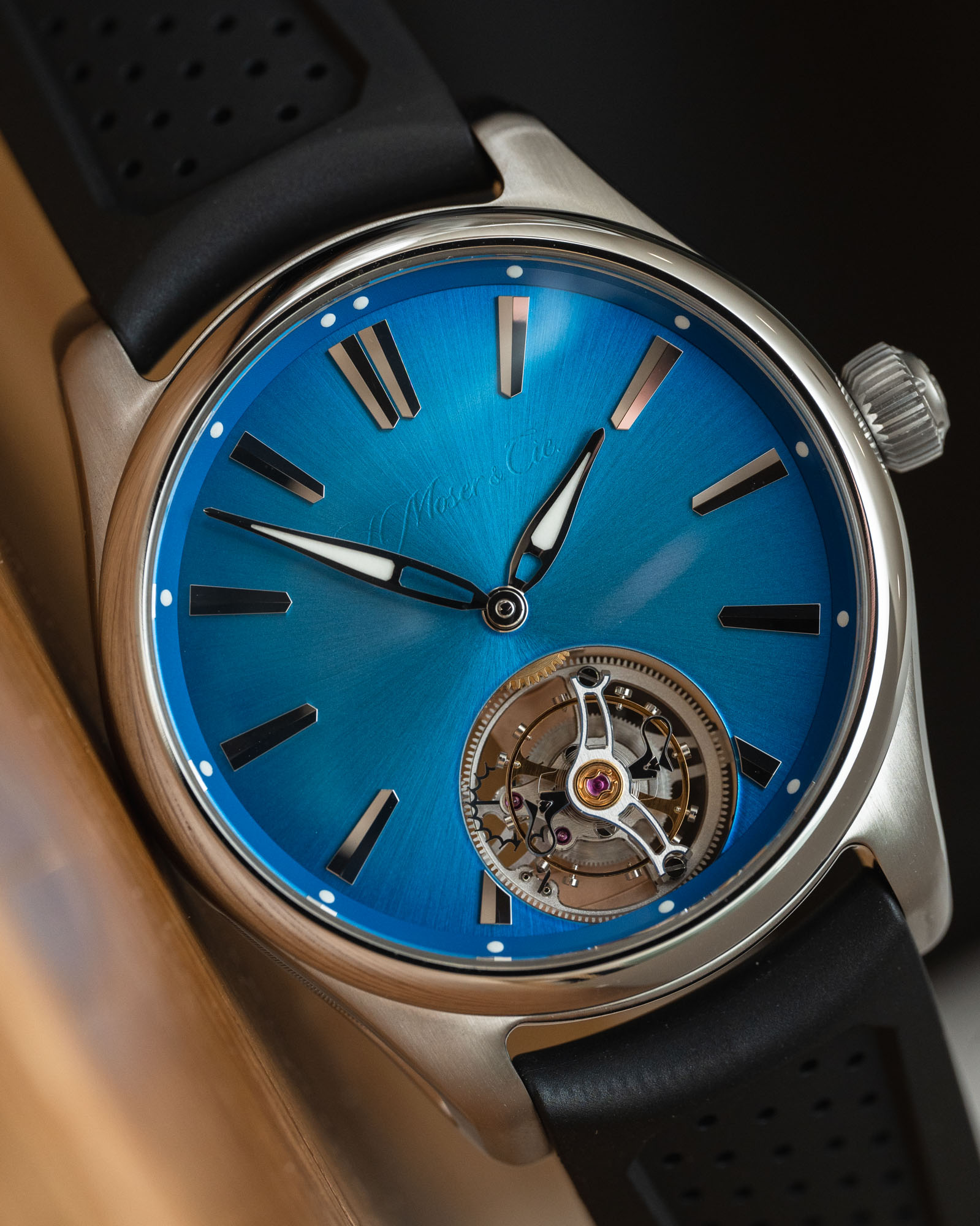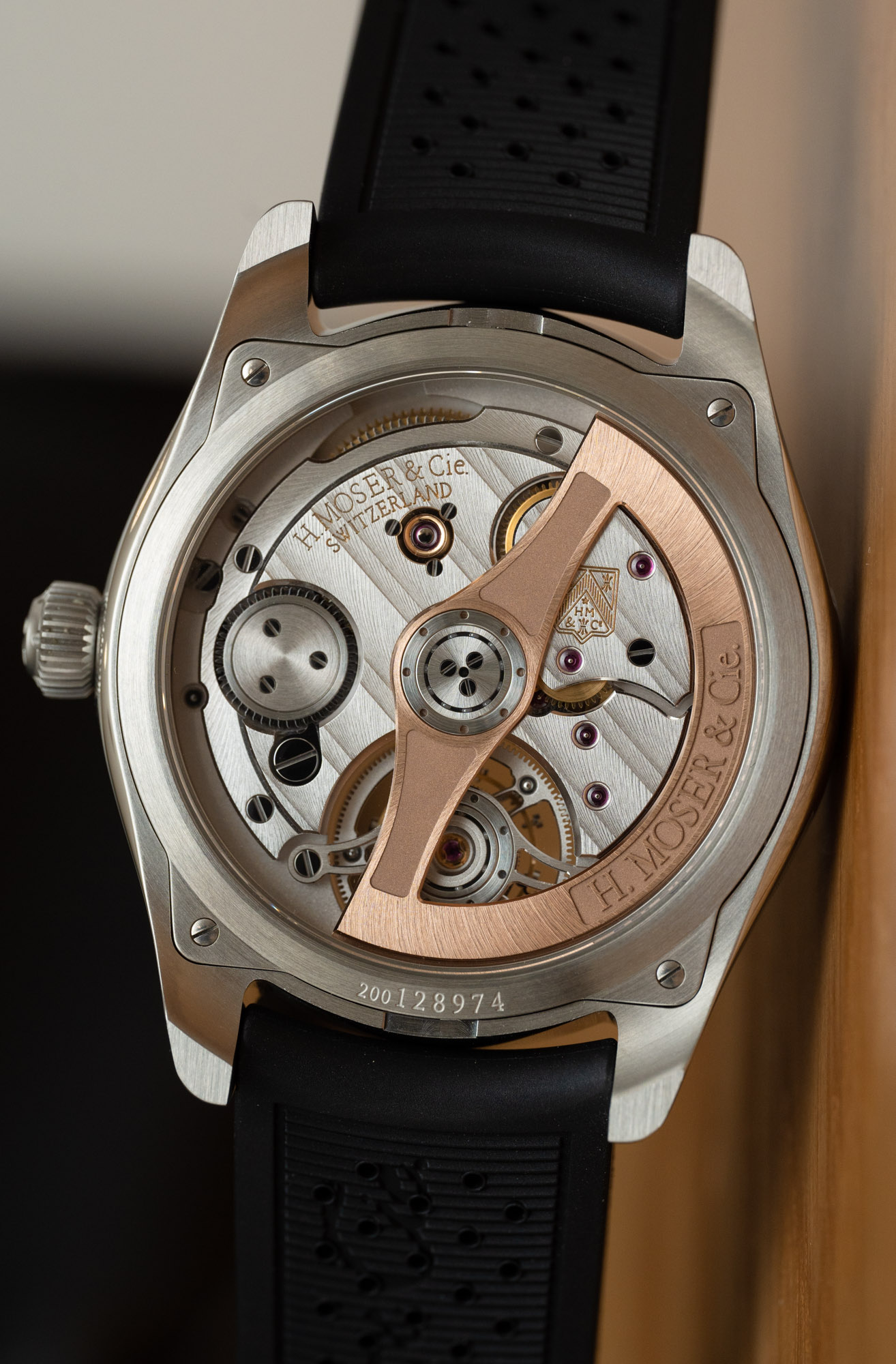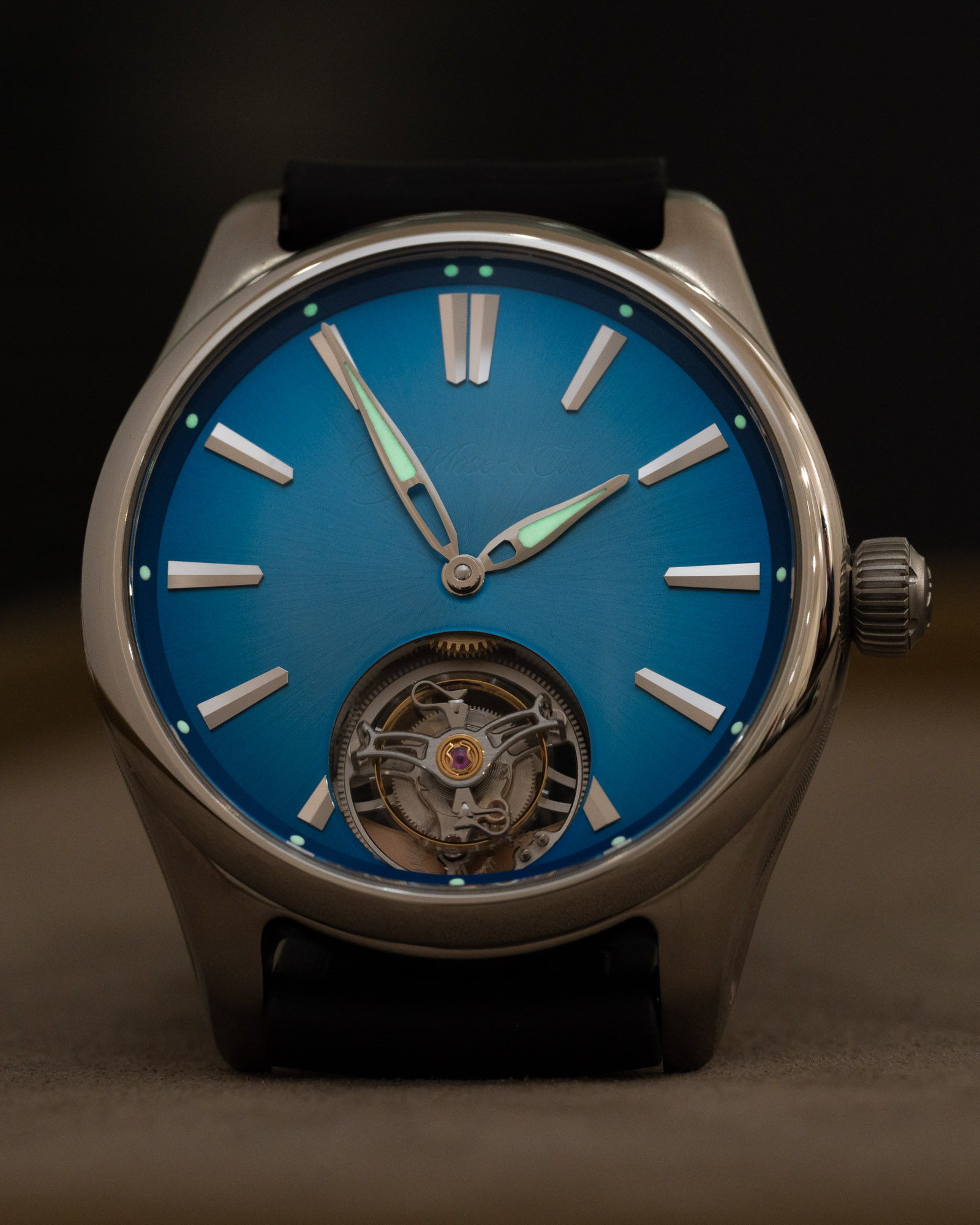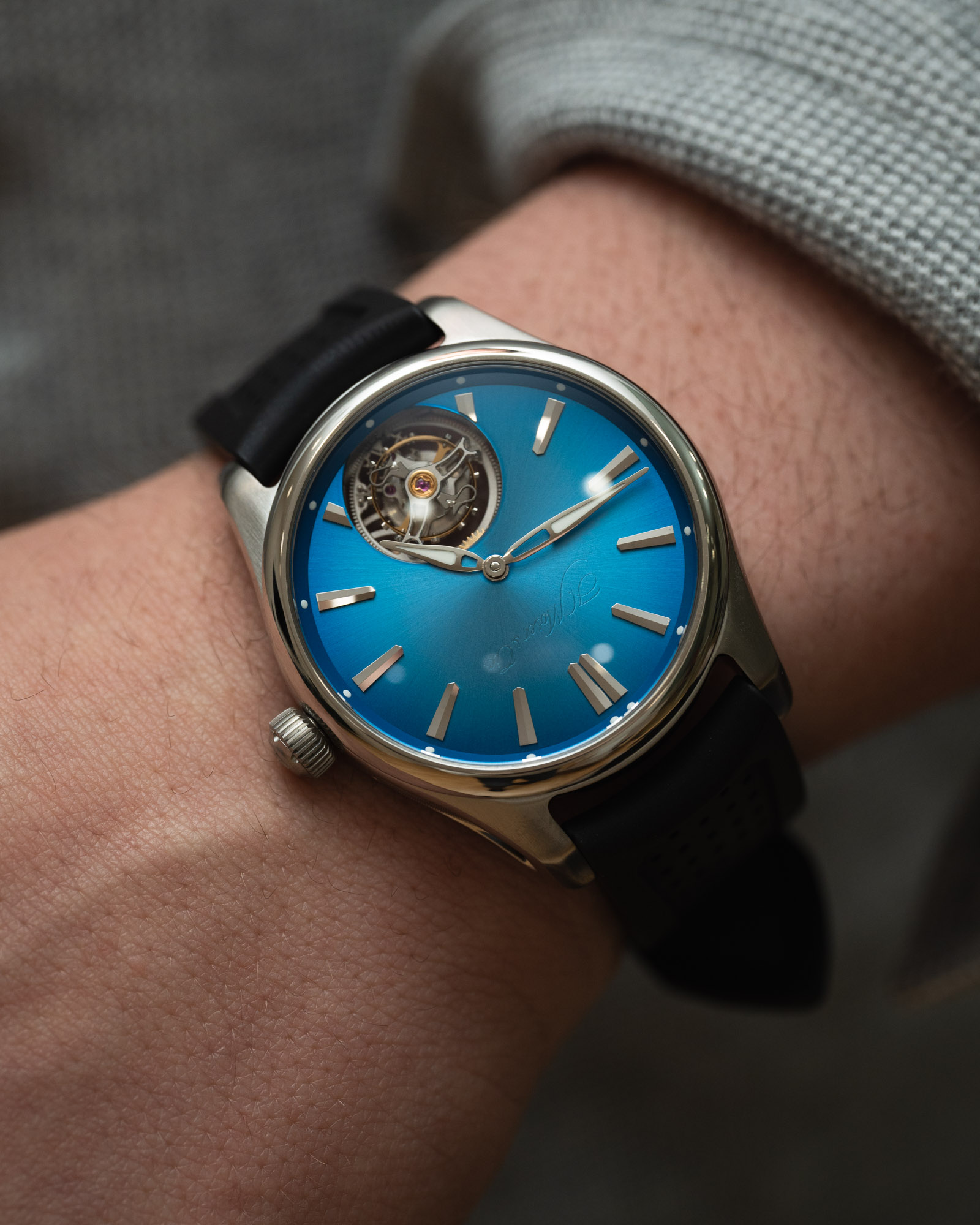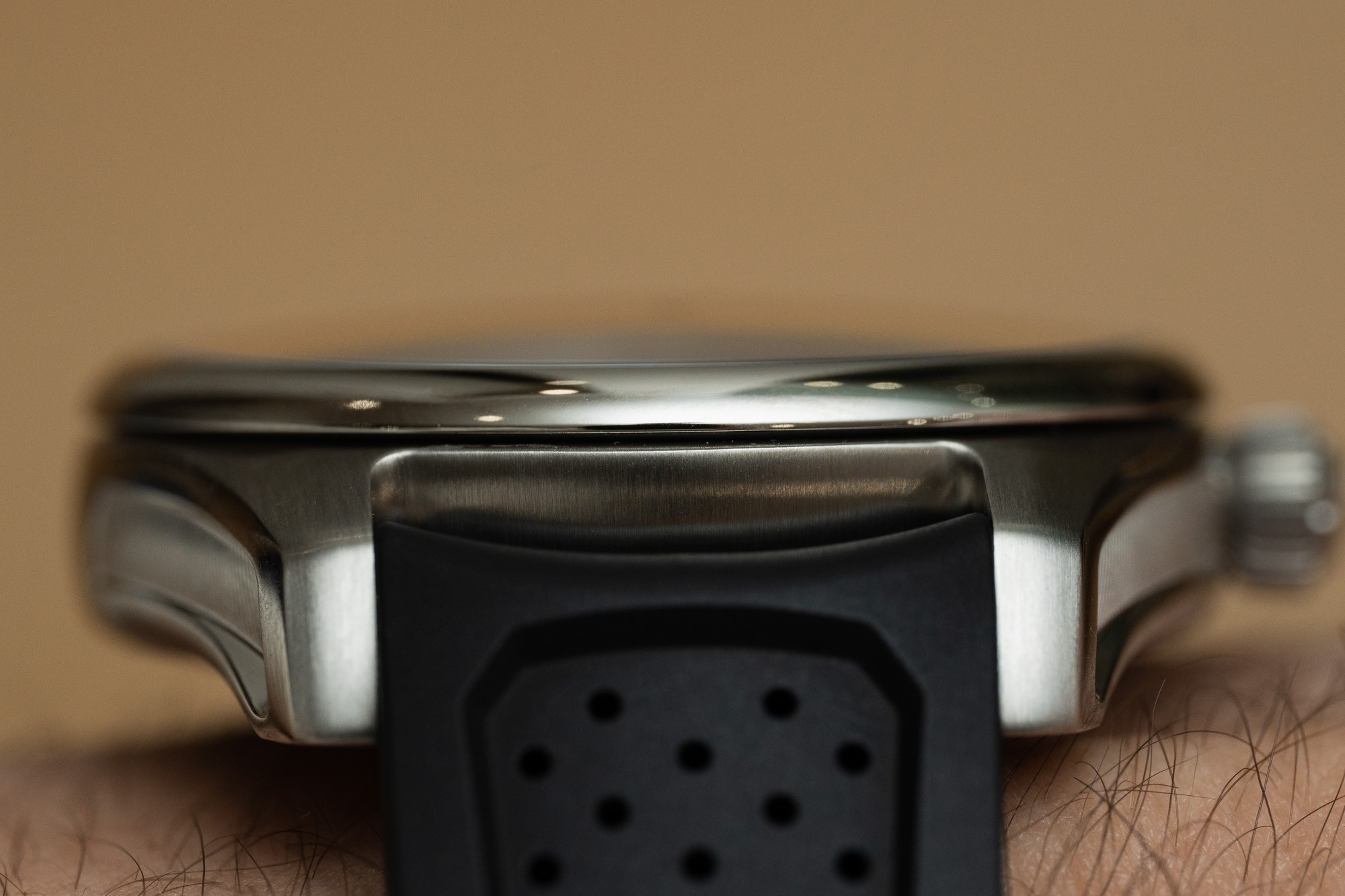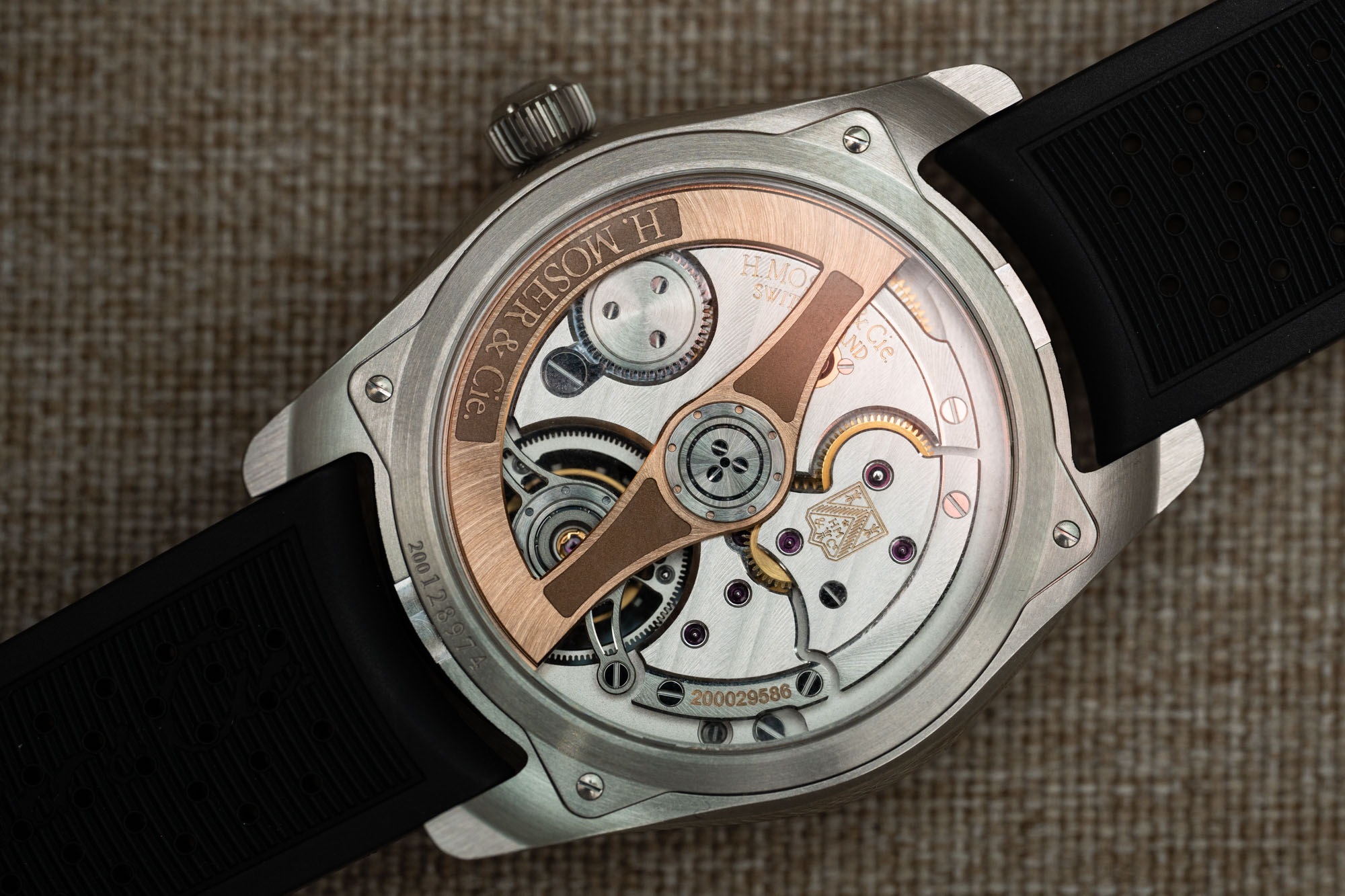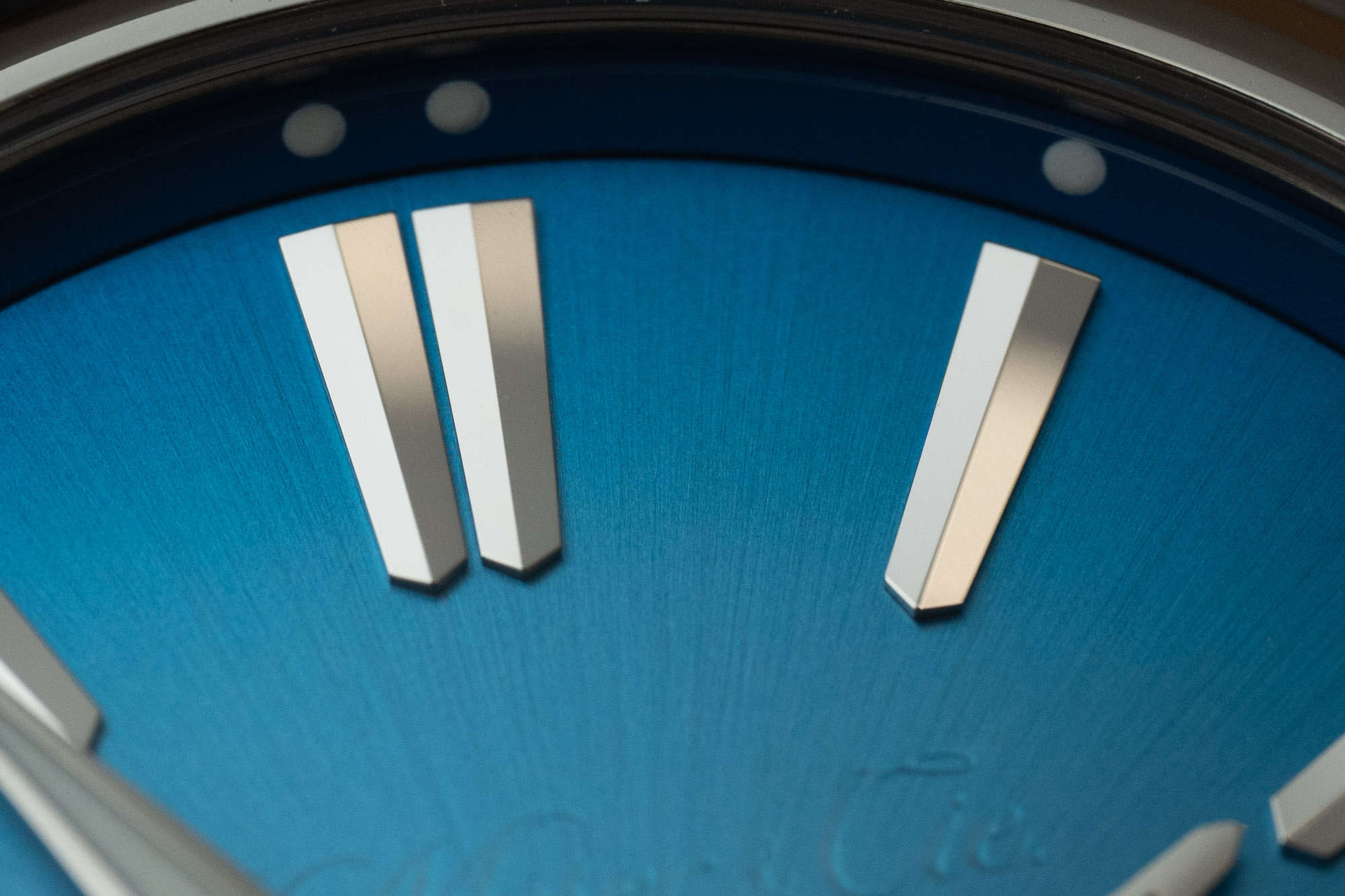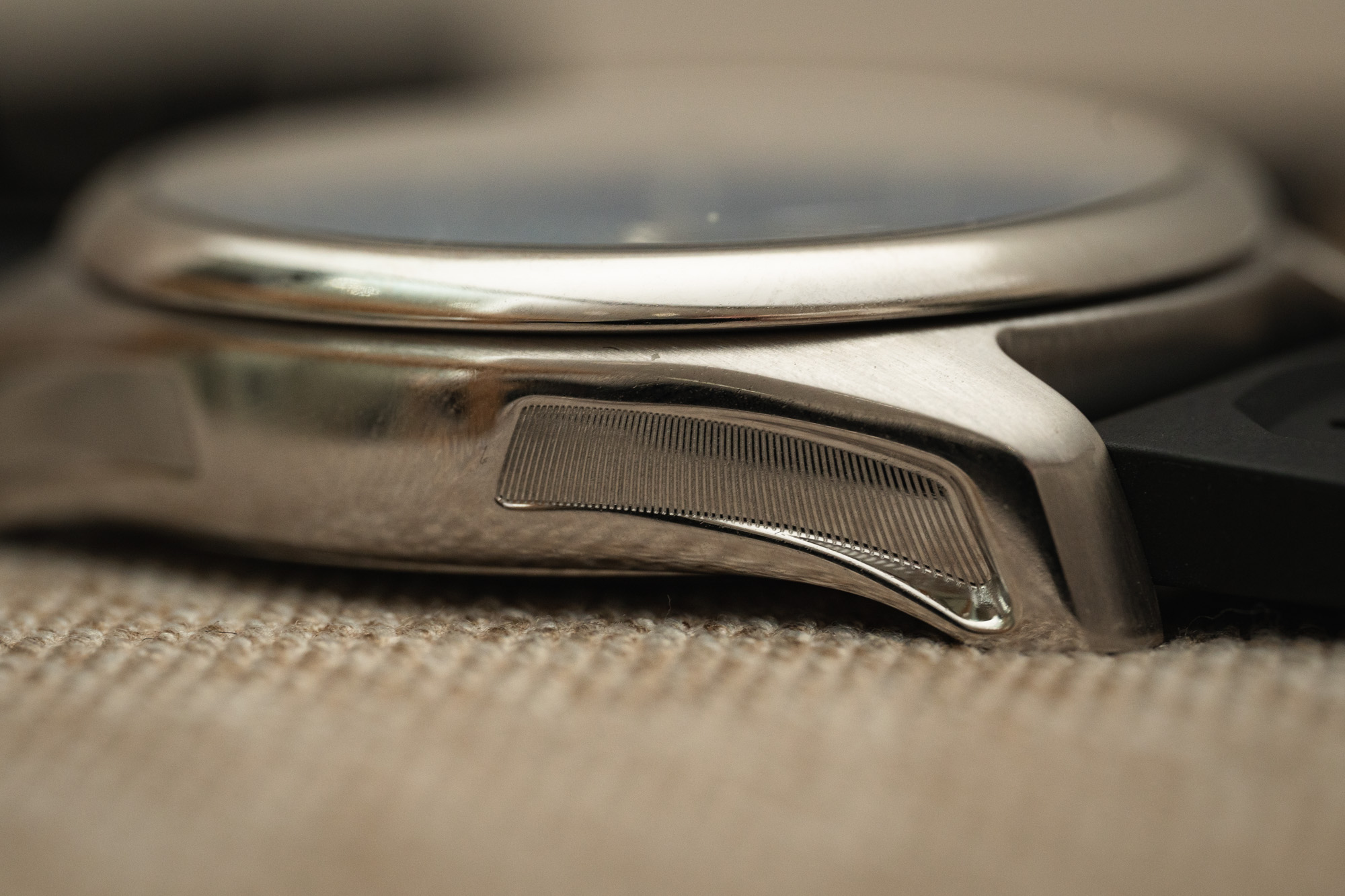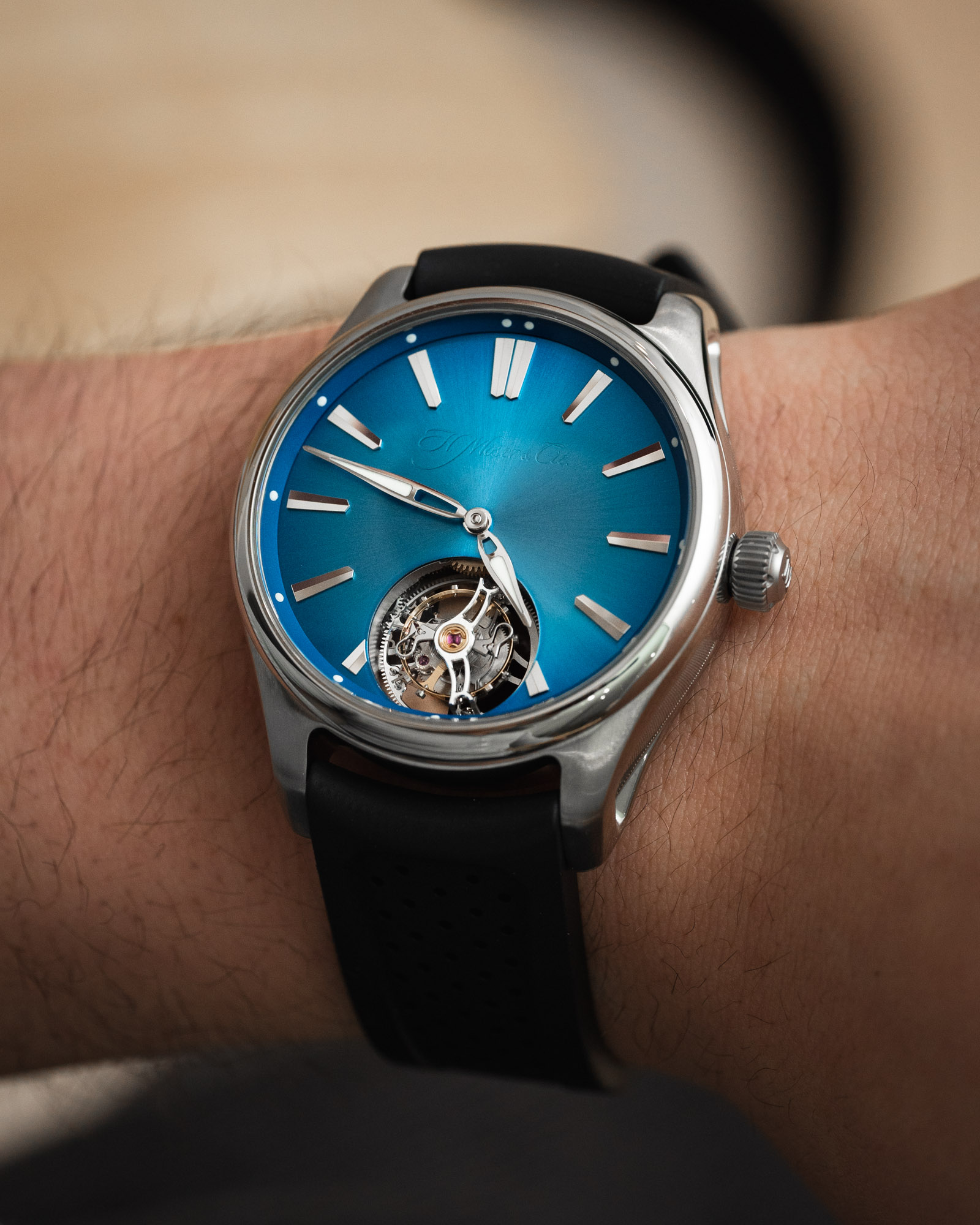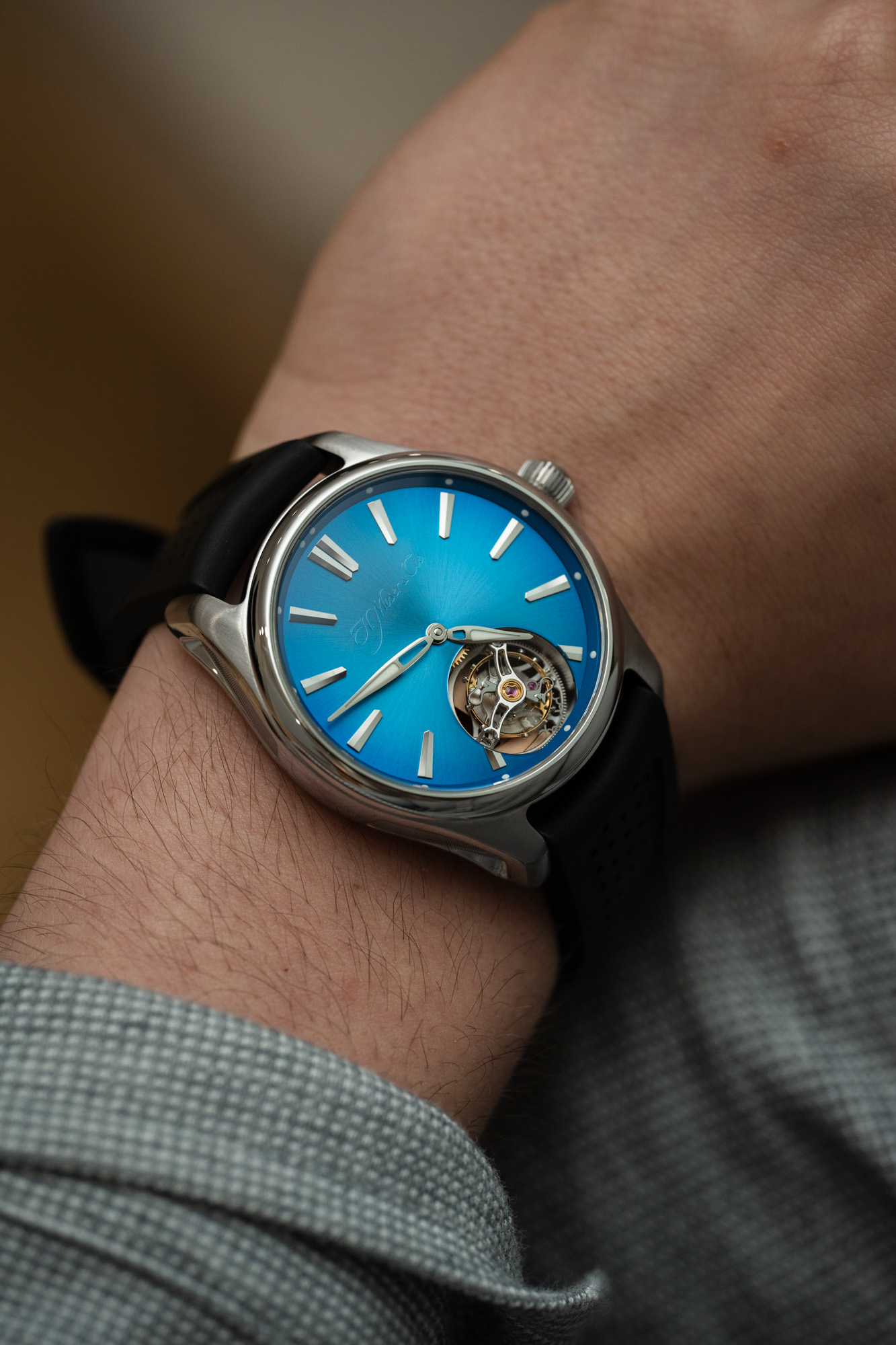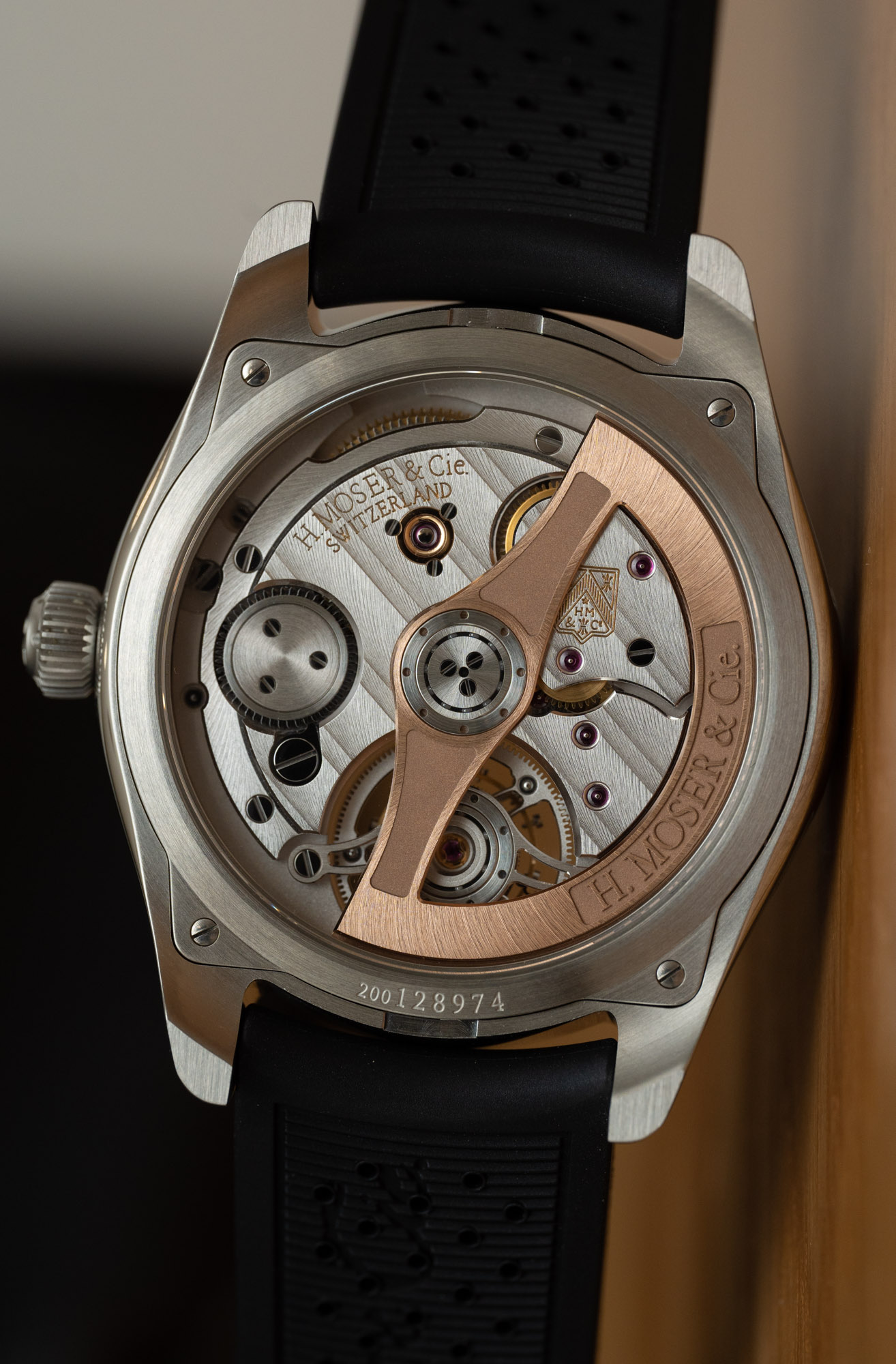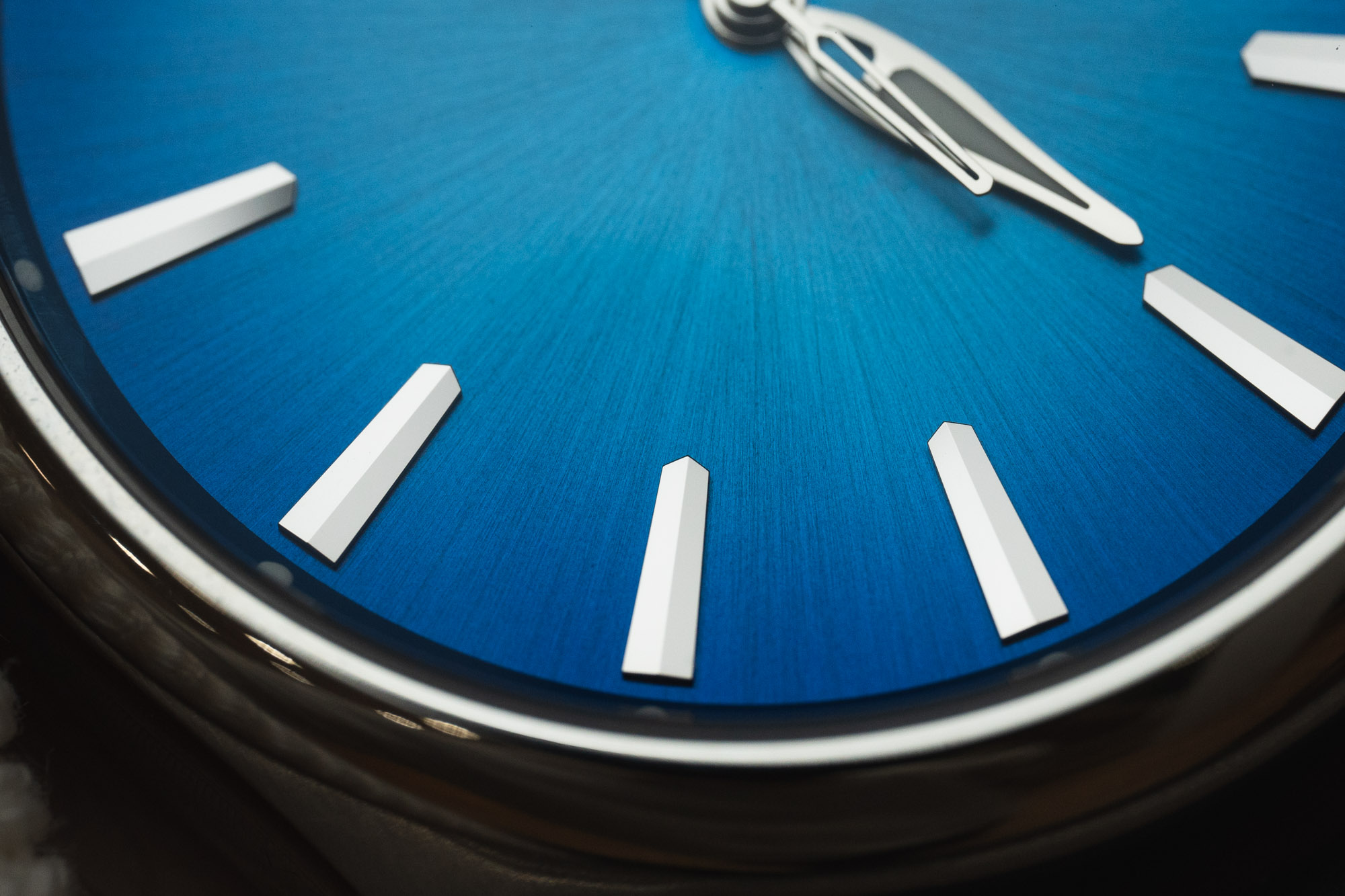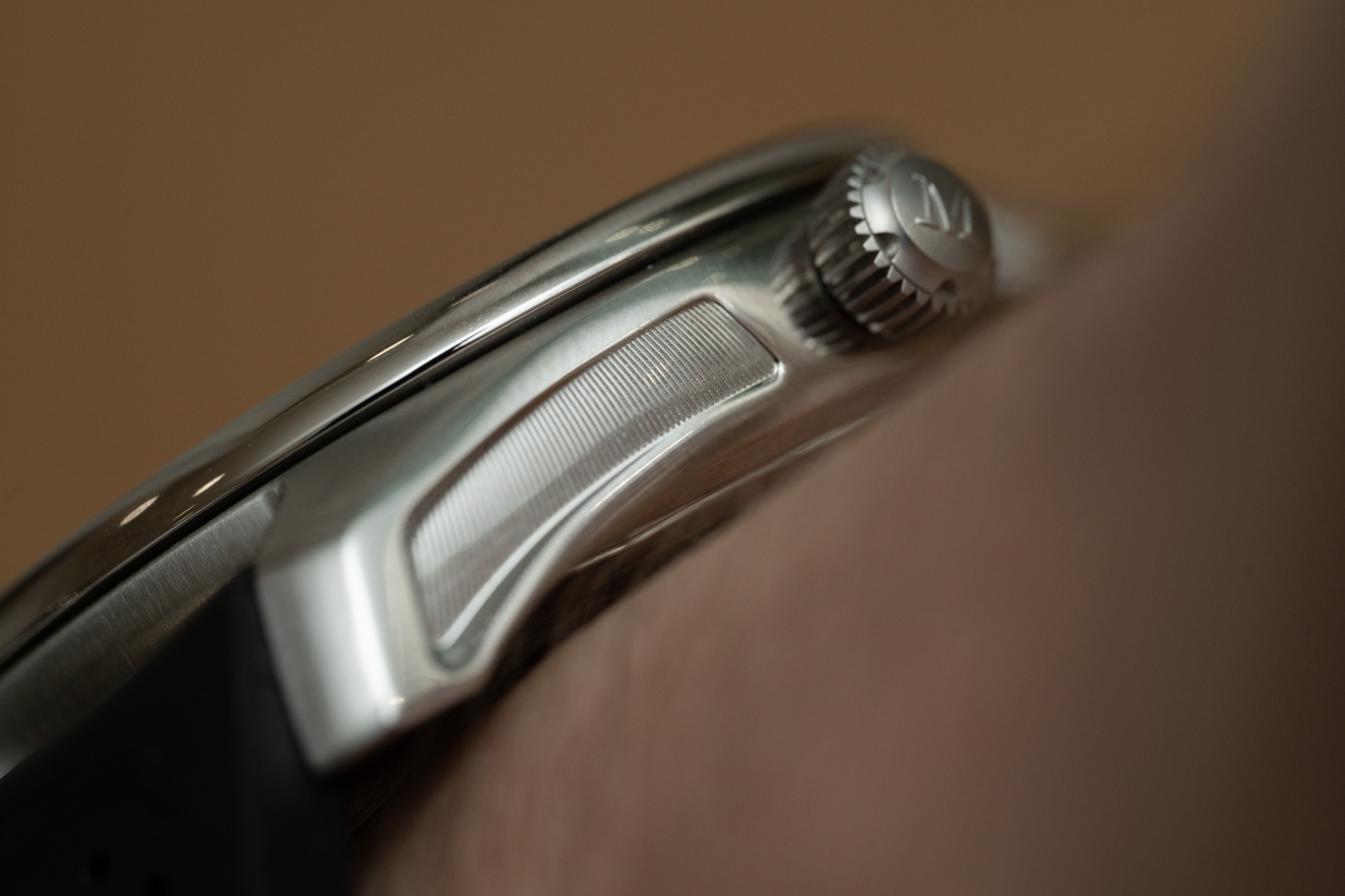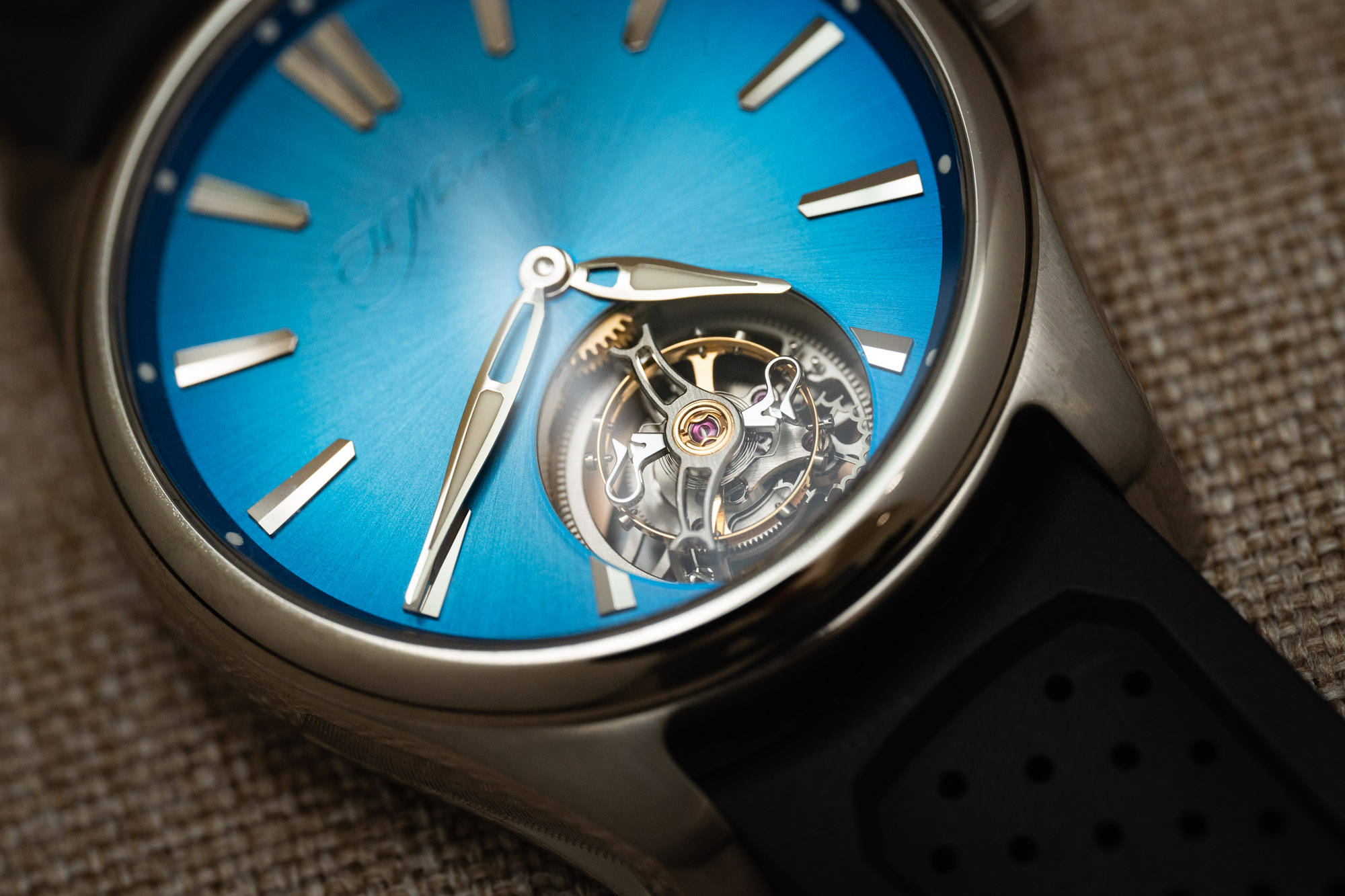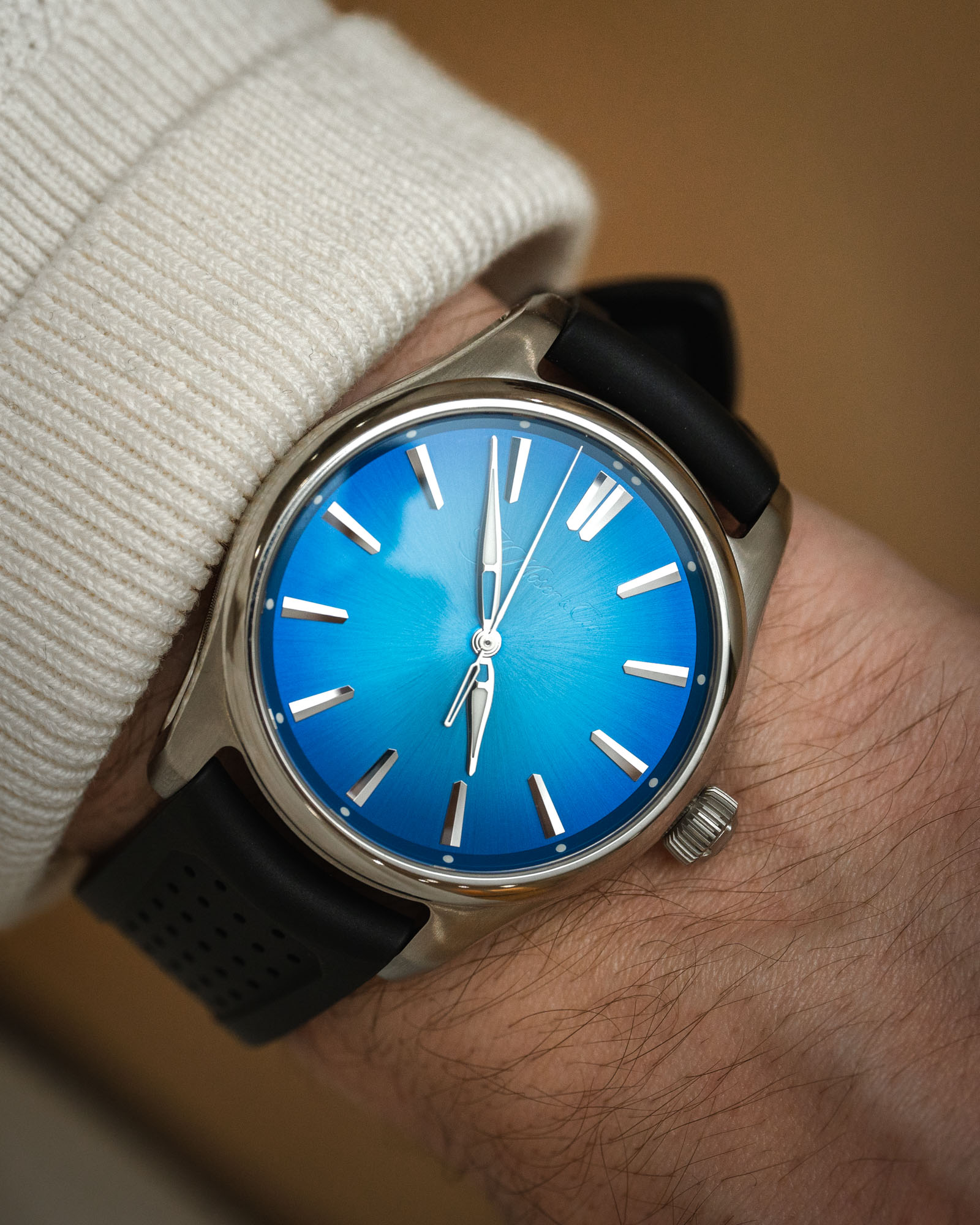
Although the brand’s signature “luxe minimalist” style has no shortage of fans throughout the enthusiast community, the majority of H. Moser & Cie.’s current models tend to fall on the larger side of the sizing spectrum. With sizing trends moving towards more compact, vintage-style proportions across the industry, it’s only natural for H. Moser & Cie. to react in kind, and for 2023 this smaller design philosophy makes its way to the brand’s sporty Pioneer series. With a rich new blue dial hue to match their more balanced proportions, the H. Moser & Cie. Pioneer Tourbillon Arctic Blue and the H. Moser & Cie. Pioneer Centre Seconds Arctic Blue set the brand up to continue its sterling enthusiast reputation even as prevailing tastes shift.
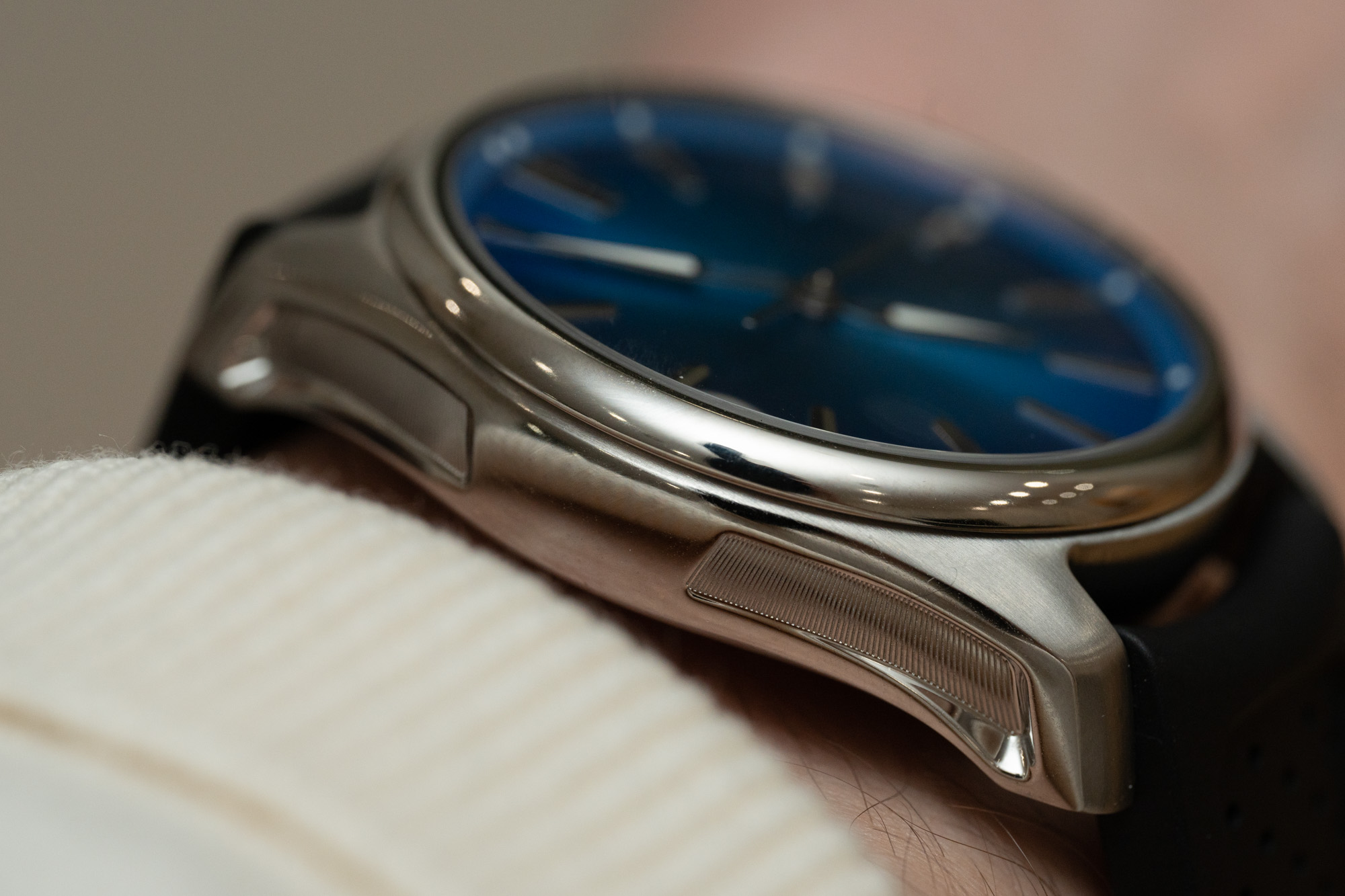
Both the H. Moser & Cie. Pioneer Tourbillon Arctic Blue and the H. Moser & Cie. Pioneer Centre Seconds Arctic Blue offer stainless steel cases sized at 40mm-wide and a manageable 12mm-thick. Compared to previous Pioneer generations, these new models offer a far more reserved and balanced stance on the wrist, shaving off a dramatic 2.8mm in overall diameter. With this change in sizing comes a somewhat less dramatic shift in the character of the case design for both models. Rather than the open, expansive ethos of the larger Pioneer platform, this new Pioneer feels sportier and more focused thanks to a proportionally wider polished smooth bezel and a more restrained dial aperture. However, the familiar Pioneer line hallmarks are still present here, including a signed pillbox crown, sharply downturned brushed lugs, and the line’s most distinguishing feature: squared-off case side cutouts topped with eye-catching vertical ribbing. Both models are topped with sapphire display casebacks and offer a solidly sporting 120 meters of water resistance.

Thanks to H. Moser & Cie.’s tightly maintained brand DNA, the visual differences between the dials of the Pioneer Tourbillon Arctic Blue and the Pioneer Centre Seconds Arctic Blue are remarkably small. Both models cleave close to the brand’s familiar visual style, with a handful of concessions for sporting use. For example, both watches use sharply faceted applied indices paired to a series of simple lumed dots marking the hours on the chapter ring. H. Moser & Cie. even preserves its elegant leaf handset for these models, although minor skeletonization and luminous fills help to make these models far more legible across a variety of conditions than their ultra-minimal dress counterparts. That said, these new Pioneer designs maintain the restrained flash of the rest of H. Moser & Cie.’s offerings, thanks to both the brilliantly polished dial hardware and the richly detailed sunburst dial surfaces themselves. The “Arctic Blue” moniker can be a bit misleading, as in practice these are far deeper, more saturated, and more oceanic blue than the recent spate of “ice blue” colorways. In typical Moser fashion, this is a gorgeously detailed sunburst texture, but the brand’s familiar fumé effect is abandoned here in the name of greater legibility. This simpler layout will likely be a point of division among enthusiasts, but to my eye, this design still offers plenty of detail to reward close inspection. Both models limit their dial text to a ghostly engraved signature logo at 12 o’clock. This subtle-yet-ornate touch virtually disappears at most viewing angles to preserve the brand’s minimal aesthetic, but in changing light it reveals a wealth of detail. From here, the Pioneer Tourbillon Arctic Blue adds even more visual drama at 6 o’clock courtesy of its broad, elemental tourbillon window. Rather than tightly confining this complex escapement in its display, H. Moser & Cie. frames this element with ample breathing room for a clean and elegant look on the wrist.
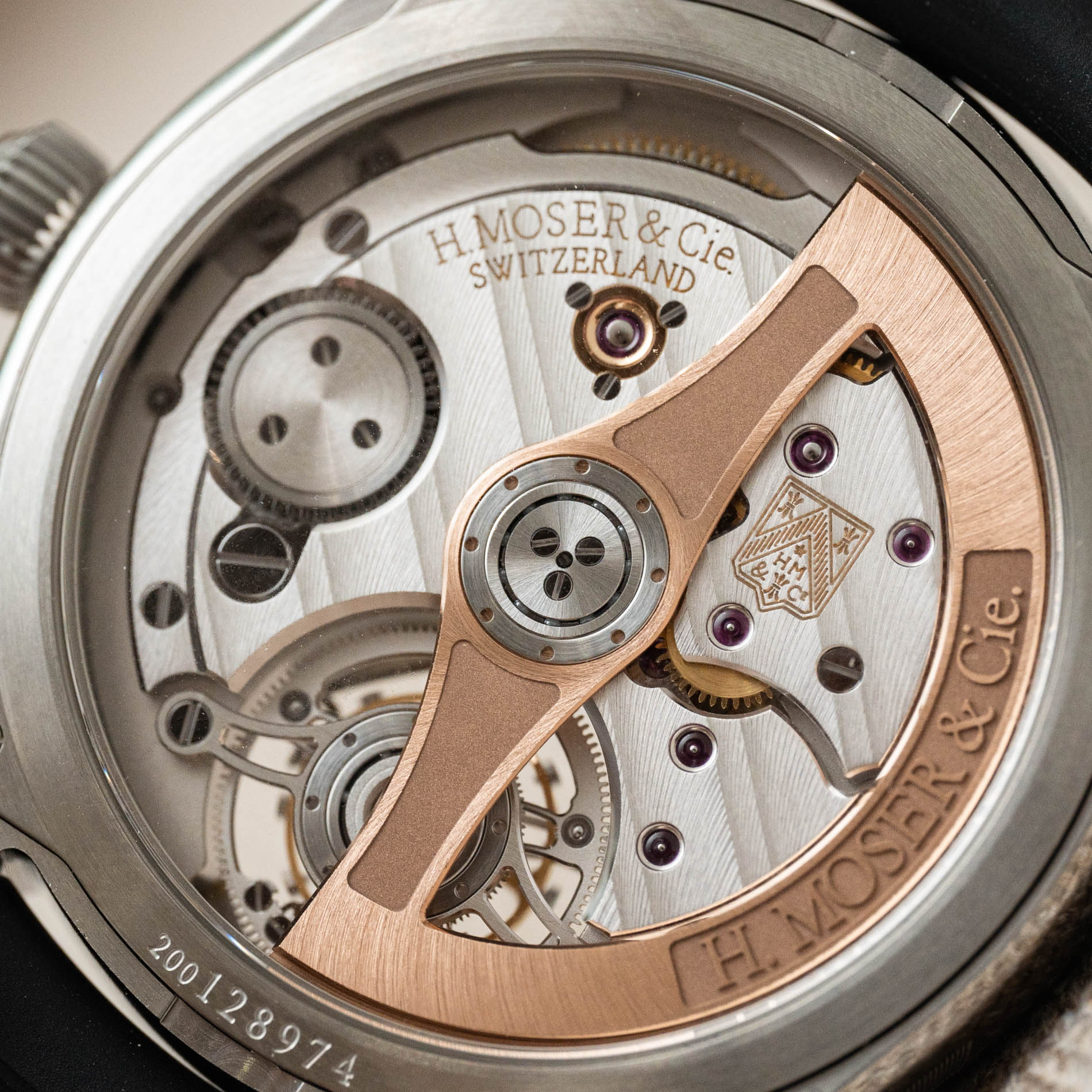
Both the H. Moser & Cie. Pioneer Tourbillon Arctic Blue and the Pioneer Centre Seconds Arctic Blue are powered by in-house automatic movements. For the Pioneer Centre Seconds Arctic Bleu, the brand turns to the familiar HMC 200 automatic movement, which boasts a hefty 72-hour power reserve at a 21,600 bph beat rate. Although this is a relatively common sight in the brand’s three-hand models, the HMC 200 is nonetheless an impressive piece of engineering, with a bidirectional pawl winding system and a refined Straumann hairspring. Meanwhile, the Pioneer Tourbillon Arctic Blue is fitted with the HMC 804 automatic tourbillon movement. This more exotic powerplant offers a twin hairspring system for improved isochronism and accuracy, along with a modular tourbillon design that can be removed for (relatively) easy servicing and repair. Here, the brand claims an identical 72-hour power reserve at a 21,600 bph beat rate. Both movements are finished in typically striking Moser fashion, with the brand’s unique double striping across the three-quarter plates, polished anglage, and dramatic arabesque brushing for the 18k-gold cutout rotor accented by frosted recessed segments. H. Moser & Cie. completes both watches with sporty sculpted black rubber straps, featuring extensive perforation for added comfort.
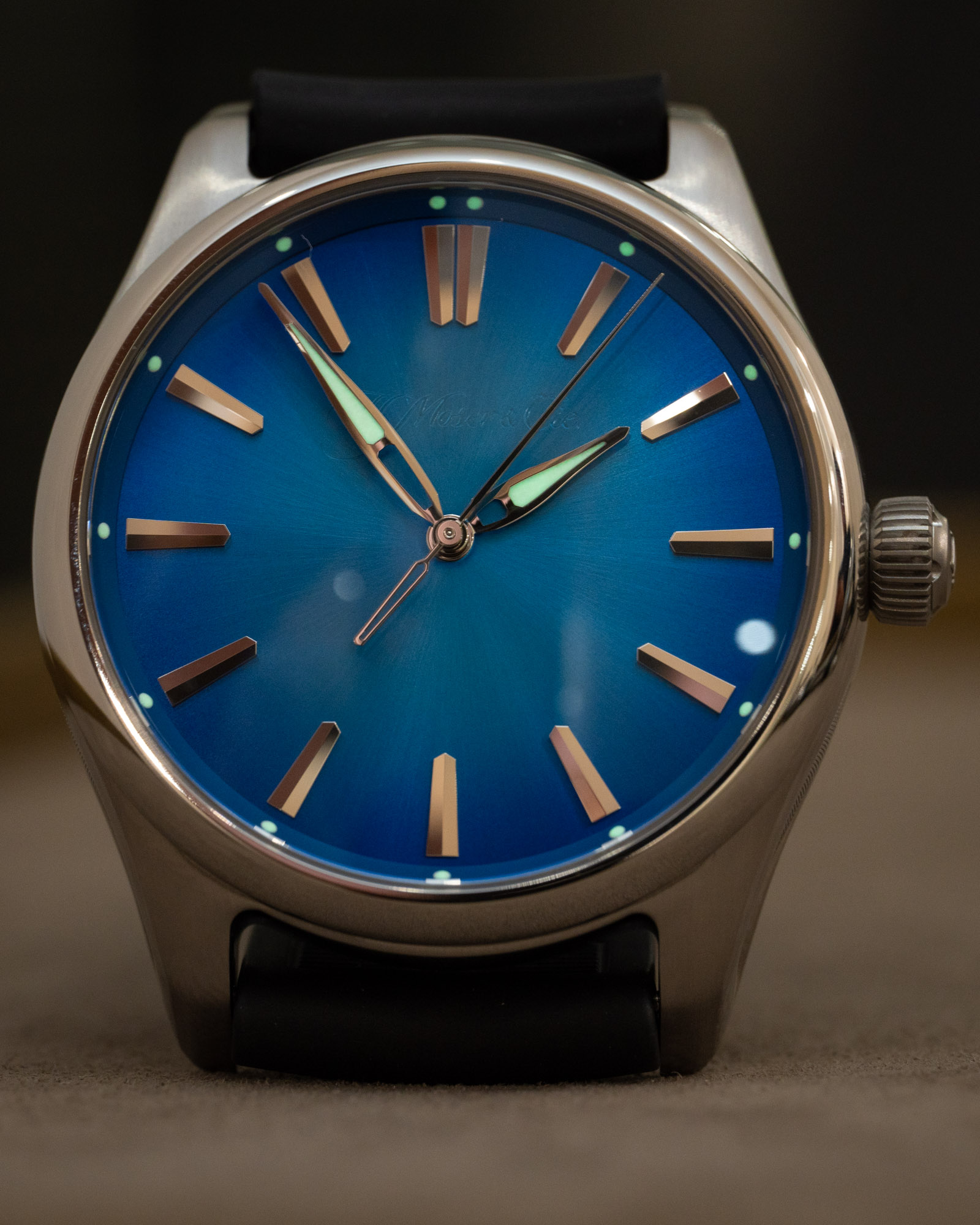
With designs that effectively evolve and refine the core Moser look while adapting to smaller modern sizing trends, the new H. Moser & Cie. Pioneer Tourbillon Arctic Blue and the H. Moser & Cie. Pioneer Centre Seconds Arctic Blue offer compelling proof that the brand is able to adapt and continue excelling in a changing enthusiast landscape. Both the H. Moser & Cie. Pioneer Tourbillon Arctic Blue and the H. Moser & Cie. Pioneer Centre Seconds Arctic Blue are available now through authorized dealers. MSRPs for the Pioneer Tourbillon Arctic Blue and Pioneer Centre Seconds Arctic Blue stand at $54,900 USD and $14,300 USD respectively, as of press time. For more details, please visit the brand’s website.

